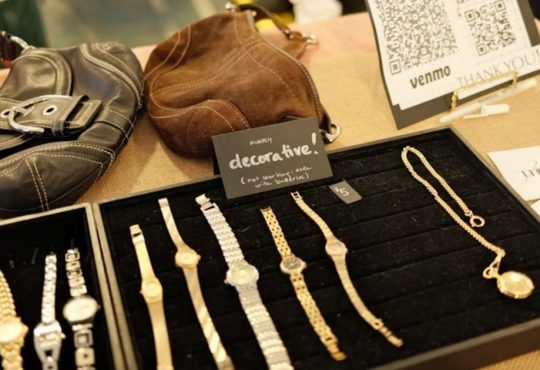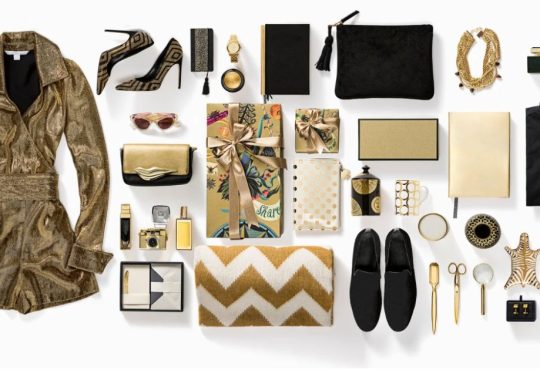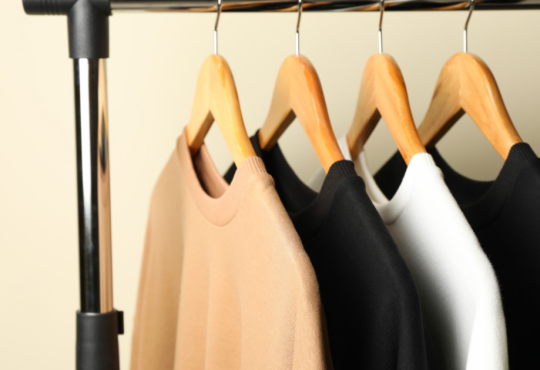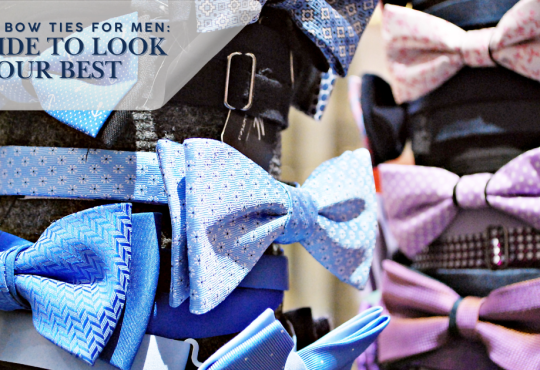In this article, we will explore strategies for identifying which pieces deserve a bigger investment and which items you can afford to buy on a budget. Along the way, we will provide real-world examples, insights into fabric quality, and practical tips to help your money go further while maintaining your style on point.
Understanding Value vs. Cost
The first step in shopping smart is distinguishing between price and value. Price is the amount you pay at checkout, while value is what you actually get in terms of quality, longevity, and versatility. For example, a $50 t-shirt from a fast-fashion store may look stylish for a season, but if it stretches, fades, or tears after a few washes, it is not really a good value. Conversely, a $200 t-shirt made from high-quality cotton may last several years and retain its shape and color, making it a better investment over time.
Shopping smart is about weighing the long-term benefits of an item against its cost. A general rule of thumb is to splurge on items that you wear often, serve multiple purposes, or significantly improve your overall wardrobe. Save on pieces that are trendy, seasonal, or used sparingly. This approach allows you to balance your budget while still enjoying high-quality, stylish clothing and accessories.
When to Splurge
Splurging does not mean spending recklessly. It means investing in pieces that offer durability, versatility, and a noticeable impact on your style. Here are the key categories where splurging often makes sense.
1. Investment Outerwear
A coat or jacket is not just a layer of clothing; it is a statement piece that can define your entire look. High-quality outerwear is durable, weather-resistant, and versatile enough to pair with a variety of outfits. Consider investing in a classic wool coat, a tailored trench, or a leather jacket. These pieces stay stylish for years and can elevate even the simplest outfits.
For example, a well-made camel wool coat may cost more upfront, but it will keep its shape, color, and warmth over multiple seasons. Compare that to a cheaper alternative that may lose its structure or develop pilling after one winter. Investing in outerwear pays off because it is worn frequently and can instantly enhance your appearance.
2. Footwear That Supports Your Lifestyle
Shoes are another area where quality matters. Poorly made shoes can cause discomfort, wear out quickly, and even affect posture and foot health. Splurge on versatile, comfortable shoes that will get plenty of use, such as leather boots, classic loafers, or supportive sneakers from reputable brands.
For example, a pair of high-quality leather boots may cost $250, but with proper care, they can last for years to come. On the other hand, a $50 pair of boots may fall apart in one season, leading to more frequent purchases and wasted money. Look for sturdy construction, quality materials, and classic designs that never go out of style.
3. Core Wardrobe Essentials
Core wardrobe pieces, such as tailored blazers, structured trousers, or a crisp white shirt, are worth splurging on because they form the foundation of your outfits. These items are used regularly and are versatile enough to be styled in multiple ways. Investing in well-constructed essentials ensures that your daily outfits look polished and professional without constant replacement.
For instance, a tailored blazer from a high-quality brand may cost more upfront, but it will maintain its shape and stitching over time. Paired with different trousers or skirts, it can be dressed up or down, providing long-term value.
4. Bags and Accessories That Elevate Your Look
Bags, watches, and other accessories are not only functional; they also convey your personal style. A well-made handbag, a leather belt, or a classic watch can last for years and instantly enhance any outfit. Investing in these pieces often has a higher visual impact than splurging on trendy clothing items.
For example, a leather tote from a reputable brand may cost a few hundred dollars, but it is built to last and can comfortably carry your essentials. The durability and timeless design make it a better long-term investment than a cheap bag that loses its shape or hardware after a few months.
5. Quality Fabrics and Craftsmanship
Splurge on fabrics that feel good, breathe well, and retain their shape. Natural materials, such as cotton, wool, linen, and silk, are generally worth the higher cost compared to synthetic blends, which can stretch, pill, or fade. Similarly, craftsmanship matters. Look for reinforced stitching, well-finished seams, and attention to detail.
For example, a silk blouse may seem expensive, but its luxurious texture, drape, and longevity often make the price worthwhile. Similarly, trousers with reinforced seams and quality zippers will outperform cheaper alternatives over time.
When to Save
Not every item in your wardrobe requires a major investment. Knowing when to save allows you to explore trends, experiment with new styles, and maintain a balanced budget. Here are key categories where you can afford to buy lower-cost options.
1. Trendy Pieces
Fashion trends come and go quickly, so it is smart to save on items that may not last more than a season. Bold prints, neon colors, or statement sleeves can be fun to wear, but splurging on them is risky because they may feel outdated in a few months. Look for affordable versions from fast-fashion or mid-tier brands that let you experiment without financial stress.
For example, a trendy animal-print top or a patterned mini skirt can be purchased from a lower-cost retailer for a fraction of the price of designer alternatives. You can enjoy the style without worrying about whether it will still feel relevant next season.
2. Seasonal Clothing
Highly seasonal clothing, such as swimsuits, holiday sweaters, or lightweight summer dresses, can often be purchased inexpensively. Since these items are only worn during certain times of the year, investing heavily in them may not provide good long-term value.
For instance, a festive Christmas sweater can be worn a few times per season. Buying it at a lower price ensures you can enjoy it without straining your budget. Likewise, inexpensive swimsuits can serve their purpose during beach trips without requiring a high-cost investment.
3. Statement Jewelry and Costume Pieces
Statement jewelry and costume accessories are fun and expressive, but they do not need to be high-end. Gold-plated necklaces, fashion rings, or beaded bracelets from mid-range retailers allow you to experiment with style without overspending. These pieces are often trend-driven and may not maintain their finish over time, so saving money is wise.
4. Everyday Basics
While core essentials, such as blazers or tailored trousers, deserve investment, some everyday basics can be purchased more affordably. Simple t-shirts, tank tops, leggings, and casual socks can often be bought at lower price points without sacrificing quality. Focus on fit and comfort, and look for reputable budget-friendly brands.
For example, a soft cotton t-shirt from a mid-tier brand may be wonderful compared to a designer version. These basics are worn frequently, but they can be replaced periodically without financial strain.
5. Accessories That Change Often
Trendy hats, scarves, and belts can add flair to outfits, but they are not necessarily long-term investments. Saving money on these items allows you to switch them out regularly and experiment with different colors, textures, or patterns.
Tips for Shopping Smart
Making informed choices is the key to balancing splurge and save items. Here are some actionable tips to shop smart:
1. Assess Your Wardrobe First
Before buying anything new, take a close look at what you already own. Identify gaps in your wardrobe and determine which pieces will truly complement your existing items. This helps prevent unnecessary purchases and ensures that new items are worth the investment.
2. Prioritize Versatility
Versatile pieces that can be styled in multiple ways are worth splurging on. For example, a neutral blazer, black ankle boots, or a leather tote can be paired with a variety of outfits. Versatility increases the value of a purchase because it is used more often.
3. Set a Budget
Establish a budget for both splurges and savings. Decide how much you are willing to spend on investment pieces versus trendy items. This helps you maintain financial discipline while still enjoying stylish purchases.
4. Research Before Buying
Check reviews, compare prices, and inspect the materials before making a purchase commitment. Online reviews often highlight issues with fit, durability, and quality, providing valuable insights. Research ensures that your splurges truly deliver value.
5. Mix High and Low
A well-styled wardrobe often combines high-end and budget-friendly pieces. Pairing an investment blazer with a low-cost top or statement necklace can create a stylish, polished look without overspending. This approach allows you to enjoy luxury pieces while still saving money on everyday items.
6. Shop Off-Season
Purchasing seasonal items during sales or off-season periods can save you a significant amount of money. For example, buying winter coats in late spring or swimsuits in fall often yields steep discounts without sacrificing style.
7. Consider Longevity and Care
Splurging is justified when an item will last for years with proper care and maintenance. Check garment care labels and invest in basic maintenance. For instance, high-quality leather shoes last longer when polished regularly and stored properly. Knowing how to care for your items extends their lifespan and value.
8. Avoid Impulse Purchases
Shopping smart means resisting impulse buys. Before purchasing, pause to ask yourself if you will wear it often, and consider whether it is worth the price. Impulse purchases often lead to cluttered wardrobes and wasted money.
Real-World Examples
To illustrate how to apply these principles, here are a few real-world scenarios:
- A designer leather jacket may cost $600, but it will last for ten years. If you wear it regularly, it is worth splurging. In contrast, a trendy printed blazer from fast fashion costs $50 and may only last one season. Save on the latter.
- A quality pair of running shoes is worth investing in to prevent foot pain and improve performance. Conversely, fun printed sneakers for casual wear can be purchased more affordably since they do not require advanced technology or durability.
- A classic tote bag that pairs with every outfit can justify a splurge, whereas seasonal mini handbags in bold colors can be purchased on a budget.
Mastering the Art of Smart Fashion Choices
Shopping smart means knowing when to splurge on durable, versatile pieces you’ll wear often and when to save on trendy or seasonal items. By balancing investment and budget-friendly choices, prioritizing value over price, and blending high-end with low-cost options, you can build a stylish, functional wardrobe without overspending. Smart shopping is about making informed decisions that maximize your style, confidence, and the value of every dollar spent.





